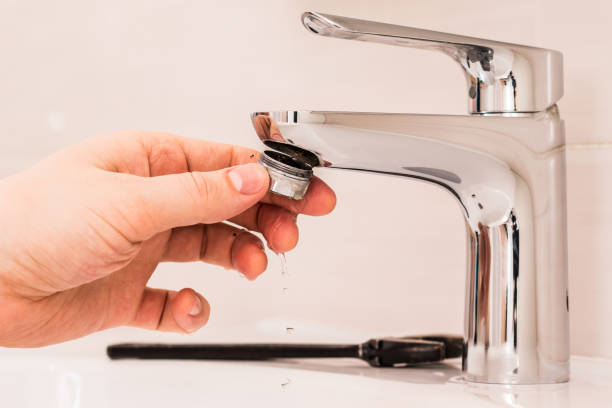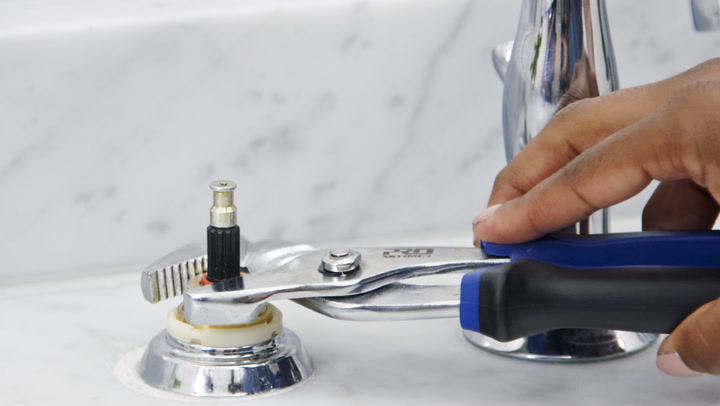Everybody may have their personal beliefs about Should I Repair or Replace a Leaky Faucet?.

Trickling faucets could look like a small aggravation, but their effect surpasses simply the annoyance of the noise. From wasting water to incurring unneeded monetary expenses and wellness threats, ignoring a dripping faucet can lead to various repercussions. In this short article, we'll explore why it's important to address this common household concern without delay and properly.
Waste of Water
Ecological Impact
Trickling taps contribute considerably to water wastefulness. According to the Epa (EPA), a single tap leaking at one drip per second can throw away greater than 3,000 gallons of water per year. This not just strains water resources yet additionally impacts communities and wild animals based on them.
Step-by-Step Overview to Repairing a Dripping Tap
Devices Required
Prior to trying to repair a leaking tap, gather the required devices, consisting of a flexible wrench, screwdrivers, replacement parts (such as washing machines or cartridges), and plumber's tape.
Usual Tap Issues and Their Solutions
Identify the kind of faucet and the certain concern creating the drip. Usual troubles consist of damaged washing machines, rusty shutoff seats, or damaged O-rings. Refer to maker directions or on the internet tutorials for step-by-step guidance on repairs.
Financial Prices
Raised Water Expenses
Beyond the environmental influence, leaking taps can pump up water bills considerably. The accumulated waste with time translates right into higher energy costs, which could have been prevented with timely repair services.
Potential Property Damages
Moreover, prolonged dripping can lead to harm to components and surfaces bordering the tap. Water accumulation can trigger staining, rust, and also structural problems if left ignored, leading to added repair costs.
Health Issues
Mold and Mildew Growth
The continuous presence of moisture from a dripping faucet develops a perfect environment for mold and mildew and mold development. These fungi not only endanger interior air high quality but also posture health and wellness risks, particularly for individuals with respiratory problems or allergies.
Waterborne Conditions
Stagnant water in dripping faucets can become a breeding place for bacteria and various other virus, boosting the risk of waterborne illness. Impurities such as Legionella bacteria prosper in stationary water, potentially causing serious diseases when consumed or breathed in.
DIY vs. Professional Repair service
Pros and Cons of DIY Repair Service
While some might attempt to take care of a trickling tap themselves, do it yourself fixings feature their own set of challenges. Without proper understanding and devices, do it yourself efforts can worsen the concern or cause insufficient repair services, prolonging the problem.
Advantages of Employing a Professional Plumber
Employing a professional plumber makes sure that the underlying root cause of the dripping tap is addressed successfully. Plumbing technicians possess the proficiency and tools to identify and fix faucet concerns efficiently, saving time and minimizing the danger of more damage.
Environmental Duty
Individual Contribution to Conservation
Taking obligation for dealing with leaking faucets straightens with broader initiatives towards water conservation and environmental sustainability. Every individual's activities collectively make a considerable effect on protecting priceless sources.
Lasting Living Practices
By focusing on timely repair services and adopting water-saving behaviors, people add to sustainable living practices that benefit both existing and future generations.
Safety nets
Normal Upkeep Tips
To prevent dripping taps, do routine upkeep such as cleansing aerators, checking for leaks, and changing worn-out parts without delay. Furthermore, consider mounting water-saving gadgets or upgrading to extra effective fixtures.
Value of Prompt Repairs
Resolving dripping taps as soon as they're observed prevents additional water waste and potential damage, eventually conserving both water and money over time.
Effect On Home Worth
Understanding of Well-Maintained Home
Preserving a property in good condition, including dealing with maintenance problems like dripping faucets, enhances its perceived worth and charm amongst prospective buyers or tenants.
Impact on Resale Worth
Qualities with well-kept plumbing fixtures, consisting of faucets, command greater resale values in the property market. Attending to leaking taps can contribute to a favorable perception during building inspections and arrangements.
Final thought
Dealing with a dripping tap goes beyond simple convenience; it's a crucial step toward saving water, reducing monetary expenses, and guarding health and residential property. Whether via DIY repair work or expert help, doing something about it to fix dripping taps is a little yet impactful method to advertise responsible stewardship of resources and contribute to a healthier, much more sustainable future.
How to Fix a Dripping or Leaky Faucet
A leaking faucet is one of the most common problems that homeowners encounter, but it being commonplace doesn’t make it any less annoying. The constant drip drip drip of a leaking bathtub faucet, showerhead, or sink tap can disturb your home’s serenity. Left neglected, a dripping faucet can also result in higher water bills and discoloration or mold growth in your sink or plumbing fixtures.
Fortunately, you don’t have to be a trained plumber to know how to stop a dripping faucet. With some basic tools, replacement parts, and a little patience, leaky faucet repair is a breeze. In this article, we’ll explain what causes dripping faucets and how you can fix them.
What Causes a Leaking Faucet?
Kitchen and bathroom faucets come in all manner of designs, but most involve some combination of valves, O-rings, seals, and washers. The O-ring is usually the weakest link, but any one of these pieces can wear down over time. Heat, moisture, temperature fluctuations, minerals, mold, and movement can contribute to warping and corrosion, breaking the watertight seal. This just comes with the territory of being a homeowner. Everything is always subject to wear and tear, and some component parts of your appliances and fixtures need to be replaced on occasion. At least replacement O-rings are cheap!
More rarely, dripping faucets can be a symptom of excessively high water pressure. Were this the case in your home, you would probably notice that the leak is not isolated to one faucet. Water pressure issues are harder to resolve on your own. We recommend contacting a professional plumber if you suspect your water pressure is too high.
How to Fix a Dripping Faucet
Pipe wrench or monkey wrench Allen wrench set Screwdrivers Old towel or rag Shut off the water.
Before you do anything, you need to turn off the water to keep from drenching your kitchen or bathroom. You should find a valve under the sink and against the wall. Once you’ve turned this valve, try turning the faucet on to confirm that the water source has been cut off.
If you can’t locate your local valve for the faucet you’re working on, you can always shut off the water to the house at the main valve. Of course, this will prohibit anyone from using the sinks, showers, or toilets while you’re working on the faucet that’s giving you trouble.
Plug or block the drain.
You’ll be disassembling the faucet and removing some small bits of hardware. Plug the drain with a stopper or rag to avoid the possibility of a small screw falling into your P-trap.
Take apart the faucet assembly.
There are several varieties of kitchen and bathroom faucets, each with its own manner of assembly. For detailed instructions on how to disassemble your faucet, you can refer to the fixture’s manual or contact the manufacturer. If you know whether you have a ball, disc, cartridge, or compression faucet, you can find detailed schematics online.
In general, you need to begin by removing the faucet handles. You might notice a small screw that you’ll need to remove with a screwdriver or Allen wrench. If you don’t see any visible securing hardware, it’s likely hidden under a decorative cap that can be unscrewed or popped off with flathead screwdriver.
Remove each piece methodically, consulting a schematic when necessary. Take notes or arrange the pieces in such a way to make it easier to correctly reassemble the faucet later.
Remove the cartridge.
Once you’ve removed the handles and securing hardware, you should be able to remove the valve cartridge or stem. Some cartridges will slide right out. Other faucet models will require you to loosen a nut with a pipe wrench before you can remove the valve stem.
Examine the exposed hardware.
With the cartridge or stem removed, inspect the component parts. Check the rubber O-rings for wear and tear. Also examine the seat washer for corrosion or other damage. These pieces are usually the responsible parties for a dripping faucet, but it’s worth inspecting the other component parts while you have the faucet disassembled.
Find replacement parts.
Once you’ve identified which faucet component has failed, find an identical replacement. Your local hardware store should have O-rings, seat washers, and other standard components in stock. If you have a luxury or uncommon faucet, you may have to contact the manufacturer for a replacement part.
It’s a good idea to take your old parts with you to the hardware store so you can compare them with the store’s inventory and be sure you’re purchasing the correct replacement.
Reassemble the faucet.
With your new parts in hand, reconstruct the faucet and handles. Don’t be tempted to overtighten screws or nuts. You might think this could create a better seal, but it can instead damage or bend a delicate part of the assembly and create a new problem for you.
Turn on the water and test the faucet.
The only thing left to do is test your work. Unplug the sink, turn the water back on, and try the faucet. Congratulate yourself on a job well done!
https://www.libertyhomeguard.com/how-to-fix-a-dripping-or-leaky-faucet/

As an avid person who reads about Why Is It Important To Fix Your Leaking Tap/Faucet?, I imagined sharing that piece of content was sensible. Loved our blog entry? Please share it. Let other people find it. I value your readership.